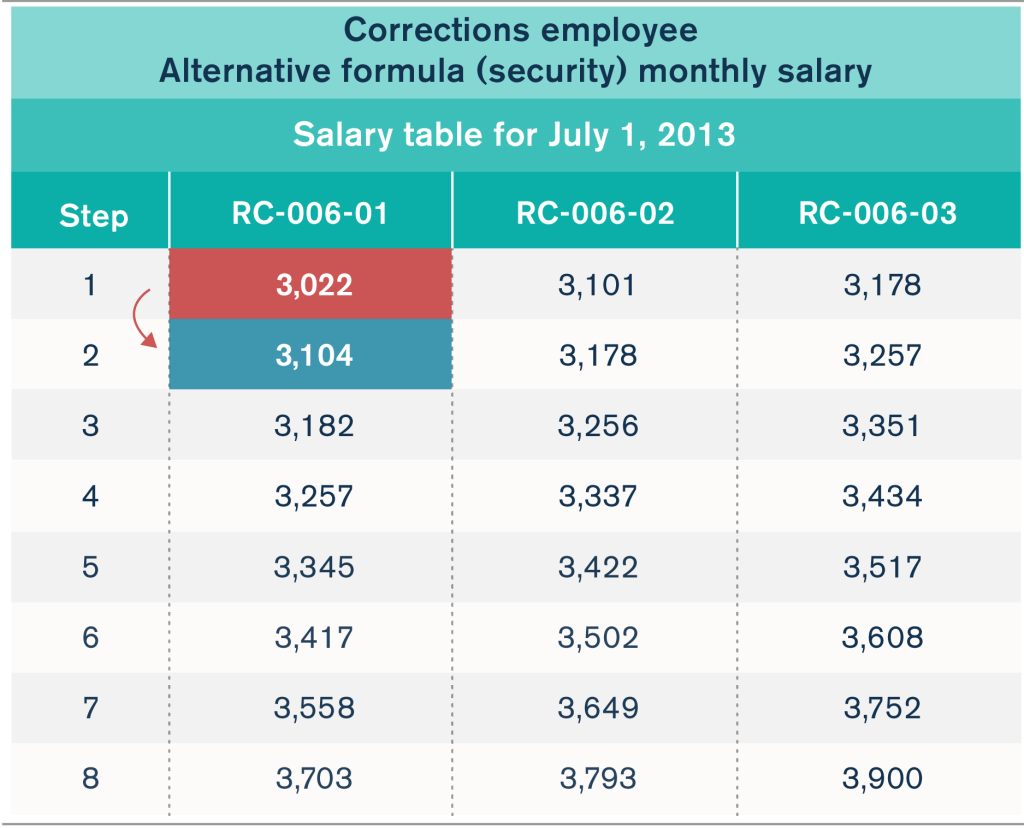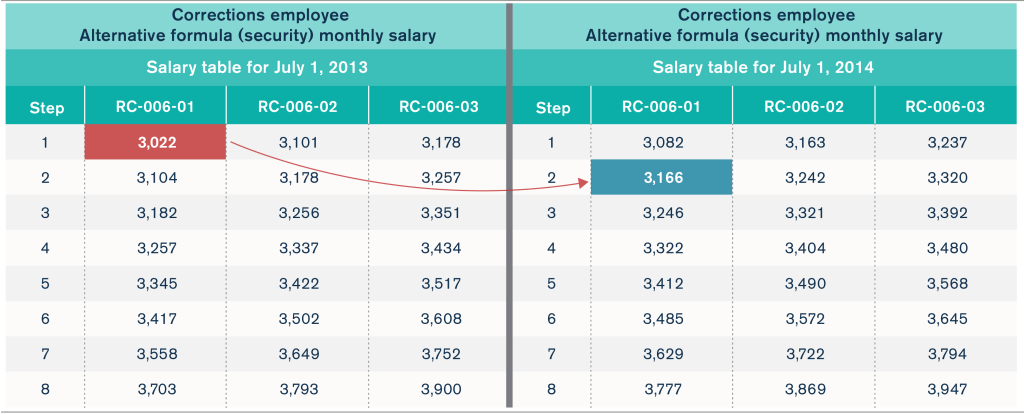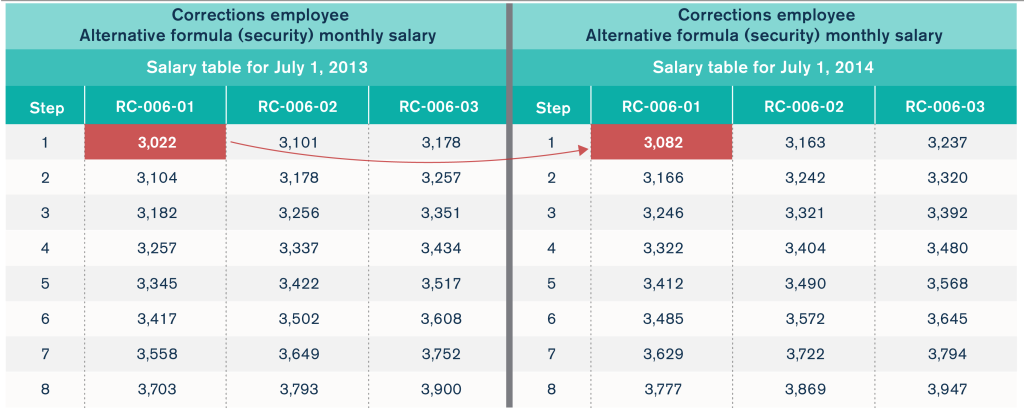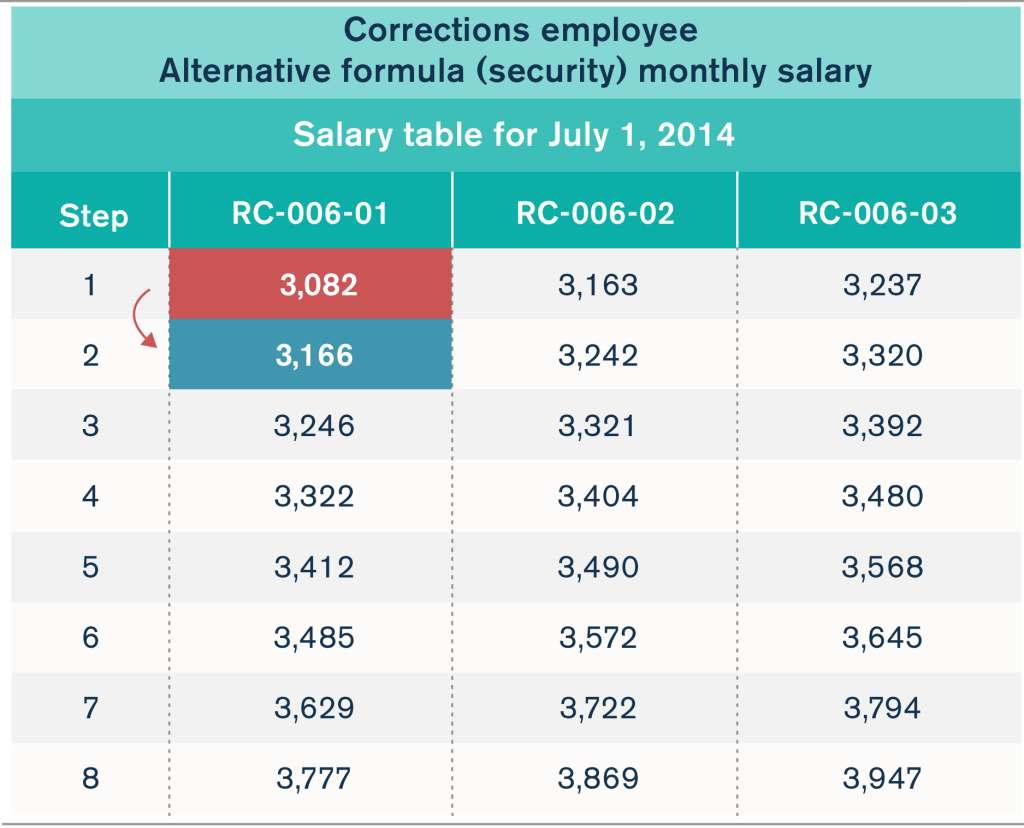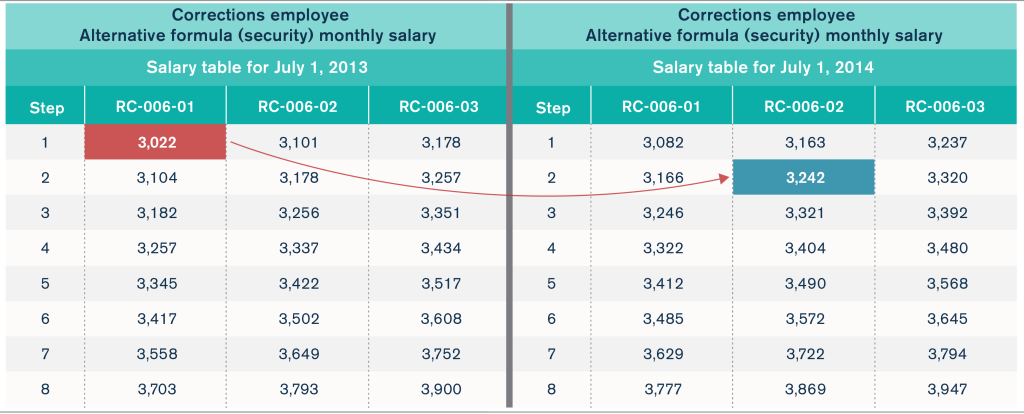AFSCME’s hidden raises: A primer on government-worker salary schedules
Under the union’s complicated salary formulas, yearly government-worker raises are higher than the American Federation of State, County and Municipal Employees would lead Illinoisans to believe.
The state and Illinois’ largest government-worker union, the American Federation of State, County and Municipal Employees, are locked in negotiations over a new contract, in which AFSCME is seeking $4 billion in additional benefits and pay increases.
Those salary hikes will depend on a salary schedule, which is a complex formula that dictates how much each worker earns and is nearly impossible for a layperson to understand. This “schedule” will cover the next several years. Here’s how it works.
Under a typical contract, AFSCME workers receive annual, automatic “across the board” raises to their salaries. That’s how the typical private-sector worker understands raises to work, and union officials usually cite this number when they talk about worker raises.
But AFSCME workers also get other increases – called “step” and “lane” increases – that add to their total salaries.
“Steps” refer to individualized, semi-automatic raises. An employee advances another step and gets a raise each year he or she achieves a “satisfactory level of competence.”
There are eight steps in the system, with step 1 sometimes broken into steps 1a, 1b, 1c, etc. A state worker will typically earn a new step increase every year until the step level reaches the eighth, or maximum, step.
In addition to step increases, some employees can also earn “lane” increases – semi-automatic promotions – meaning they are placed on higher-paying scales. This kind of promotion is granted when an “employee [has] completed the required time period for such advancement” and has received a “satisfactory annual evaluation and a promotional ‘A’ or ‘B’ grade from the Department of Central Management Services.”
AFSCME’s last expired contract with the state contained “across the board” 2 percent-per-year raises (the increase to which AFSCME officials refer when they talk about state workers’ “annual raises”), as well as step and lane increases, which pushed many workers’ total raises far above 2 percent.
Taking a closer look
Looking at how much a hypothetical Illinois Department of Corrections employee made under the last AFSCME contract with the state helps illustrate how state worker salary schedules work.
It is important to note that in the following two examples, many would say that the employee is only receiving a 2 percent raise.
However, due to “steps” and “lanes,” the truth is much different. The salary increases the corrections employee receives are actually much higher.
Example: Taking a step
Consider a corrections employee at a salary level in step 1 (first year), lane 1 (position RC-006-01) under the July 1, 2013, salary schedule.
According to the salary schedule, she earned $3,022 a month.
One might expect that this worker would occupy step 2, lane 1 (position RC-006-01) in her second year. This would entitle her to $3,104 a month – a 2.7 percent increase over the previous year.
But that’s not how it works.
In order to determine how much the corrections employee makes, one must look at the July 1, 2014, salary schedule, which governs pay in her second year.
The now second-year worker moves to the higher monthly salary of $3,166 in step 2, lane 1, for a total increase of 4.8 percent over the previous year, not 2.7 percent.
That total increase of 4.8 percent comes from two changes to the corrections employee’s salary:
First, the worker receives a 2 percent annual raise by moving to step 1, lane 1 in the July 1, 2014, salary schedule from step 1, lane 1 in the July 1, 2013, salary schedule. This is due to an annual “across the board” salary increase that shifts the entire salary table between 2013 and 2014.
As demonstrated by the table, the 2013 monthly salary of $3,022 in step 1, lane 1 shifts to $3,082 in 2014. That’s an increase of 2 percent. That’s the raise to which AFSCME officials refer when they talk about state workers’ “annual raises.”
The second factor affecting the corrections employee’s salary is an additional 2.7 percent salary increase in the form of a step increase. For completing another year of service and getting a “satisfactory” review, she moves down to step 2 from step 1 in the July 1, 2014, salary schedule.
So, combining the annual “across the board” salary increase of 2 percent, and a step increase of 2.7 percent, the corrections worker’s monthly salary rises to $3,166 from $3,022, a total increase of 4.8 percent in one year (differences in increases due to compounding).
That’s more than double the raise that AFSCME would say a worker receives.
Example: Changing a lane
On top of annual raises and step increases, a state worker can also earn a third raise through what is known as a lane increase. A lane increase is a semi-automatic promotion that moves an employee to a higher-paying scale.
This kind of promotion is granted when the “employee [has] completed the required time period for such advancement” and has received a “satisfactory annual evaluation and a promotional ‘A’ or ‘B’ grade from the Department of Central Management Services.”
To illustrate, assume the corrections employee from the example above was on track to receive a promotion after her annual evaluation. In the July 1, 2013, pay schedule, she occupied step 1, lane 1 (position RC-006-01), earning $3,022 a month during that year.
Assuming the employee received a promotion to her job’s next-highest salary position, the salary schedule dictates that she would move to step 2, lane 2 (position RC-006-02) in 2014. In total, she would receive a monthly salary of $3,242 in 2014 – a 7.3 percent raise over the previous year.
That 7.3 percent increase comes from three changes to the worker’s salary:
- An annual “across the board” salary increase of 2 percent
- A step increase of 2.7 percent for working another year and receiving a “satisfactory” review
- A lane increase of 2.5 percent for earning a promotion to the higher-paying scale
Result: State worker raises are more than just annual raises
Due to the complicated and convoluted nature of government workers’ salary schedules, many people take AFSCME’s claim at face value when union officials talk about salary raises in terms of the automatic, “across the board” pay increases all workers receive.
But as the examples above show, step and lane increases can have significant effects on government-worker salaries.
In fact, due to steps and lanes, most government workers’ yearly raises can end up much higher than what the union claims.


